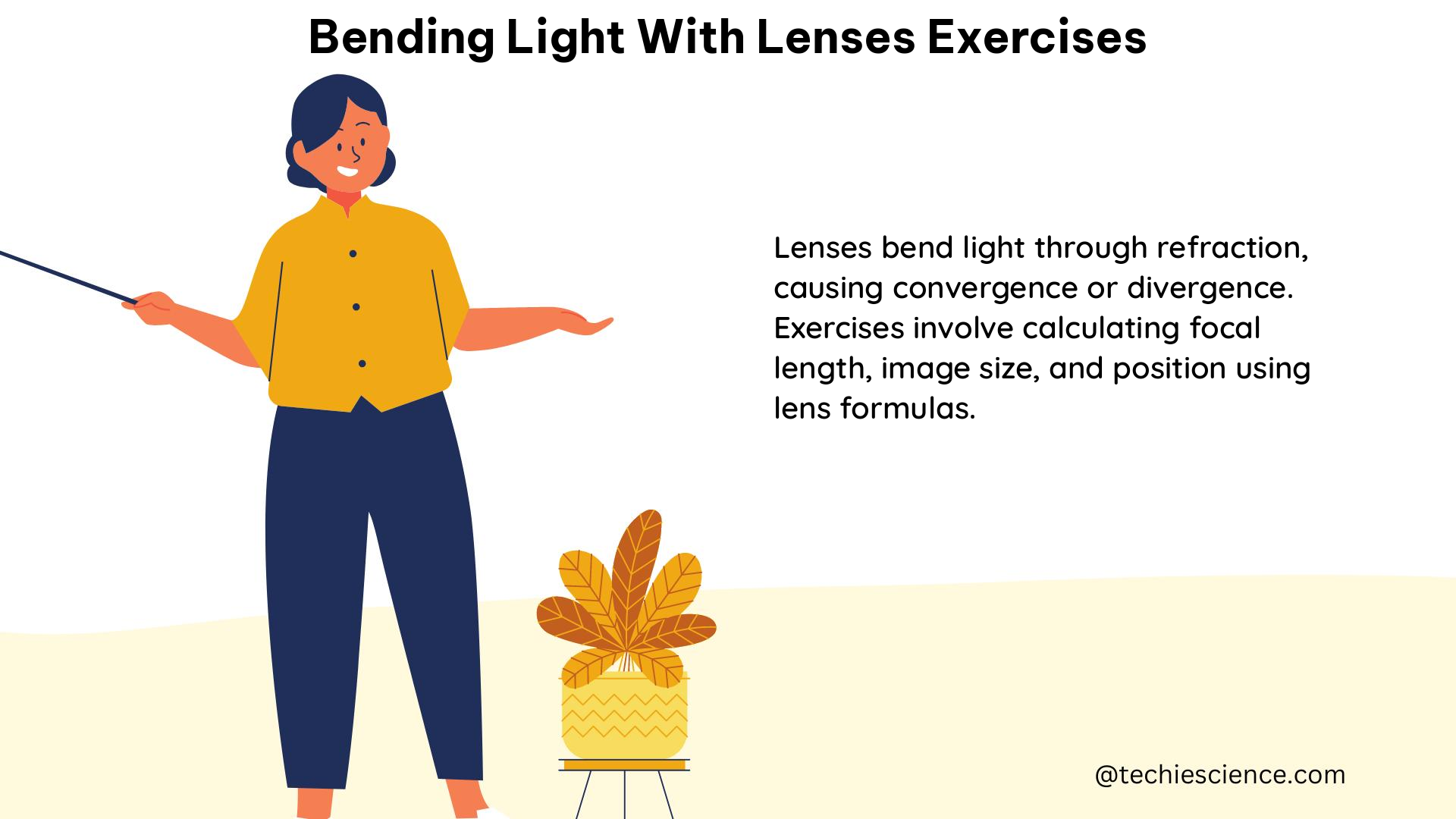Bending light with lenses is a fundamental concept in physics, and understanding the principles of refraction and focal length is crucial for performing experiments and exercises related to this topic. This comprehensive guide will provide you with a wealth of information, including theoretical explanations, practical experiments, and virtual lab simulations, to help you master the art of bending light with lenses.
Understanding Refraction and Refractive Index
Refraction is the phenomenon that occurs when light travels from one medium to another, causing it to bend or change direction. This change in direction is described by Snell’s law, which relates the angles of incidence and refraction to the refractive indices of the two media. The refractive index (n) is a measure of how much light slows down in a medium relative to the speed of light in a vacuum. The formula for refractive index is:
n = c/v
where c is the speed of light in a vacuum and v is the speed of light in the medium.
Focal Length and the Lensmaker’s Equation

In the context of bending light with lenses, the focal length (f) is a critical parameter. The focal length is the distance between the center of a lens and the point at which light rays converge or diverge after passing through the lens. For a convex lens, the focal length is positive, while for a concave lens, it is negative. The focal length can be calculated using the lensmaker’s equation:
1/f = (n_2 - n_1) / (r_1 - r_2)
where n_1 and n_2 are the refractive indices of the medium before and after the lens, respectively, and r_1 and r_2 are the radii of curvature of the lens surfaces.
Practical Experiments: Bending Light with a Water Glass
One simple experiment to explore the concept of bending light with lenses is to use a water glass as a lens. In a YouTube video by Meenakshi and Emily, the focal length of the water glass lens is measured to be approximately 7.3 centimeters. The steps of this experiment are as follows:
- Fill a water glass with water.
- Place an index card or paper behind the glass, and move it back and forth until a clear, focused image is formed.
- Measure the distance between the center of the glass and the index card. This distance is the focal length of the lens.
This hands-on experiment provides a practical, quantifiable example of bending light with a lens and can be easily replicated by students in a classroom or lab setting.
Virtual Lab Simulations: Exploring Lens Systems
In addition to physical experiments, virtual lab simulations can be a valuable tool for understanding the principles of bending light with lenses. The PhET simulation, for example, allows students to manipulate variables such as the lens shape, object distance, and image distance, and observe the effects on the light paths and image formation.
Some key features of the PhET simulation include:
- Ability to choose between different lens types (convex, concave, or combination)
- Adjustable object distance and lens position
- Visualization of light rays and the formation of real and virtual images
- Measurement of focal length, object distance, and image distance
By interacting with the simulation, students can explore the complex behavior of light in lens systems and perform “what-if” scenarios that might be difficult or impossible to set up in a physical lab.
Advanced Theoretical Investigations
For more advanced students interested in the complex behavior of light in extreme gravitational fields, a research paper by Perlick et al. presents a numerical investigation of optical caustics in gravitational lensing by a spinning black hole. While not directly related to bending light with lenses exercises, this paper provides valuable insights into the intricate nature of light bending in the presence of strong gravitational fields.
The paper includes detailed simulations and calculations of the caustic structures, which could be useful for students exploring the theoretical aspects of light bending and its applications in astrophysics and cosmology.
Conclusion
This comprehensive guide has provided you with a wealth of information on bending light with lenses exercises, covering the fundamental concepts of refraction and focal length, as well as practical experiments, virtual lab simulations, and advanced theoretical investigations. By understanding these principles and engaging in hands-on activities, you can develop a deep understanding of the complex behavior of light and its applications in various fields of physics.
Remember, the key to mastering bending light with lenses exercises is to actively engage with the material, experiment with different setups, and explore the various resources available to you. Good luck on your journey of discovery!
References
- Perlick, V., Tsupko, O. Y., & Bisnovatyi-Kogan, G. S. (2015). Optical caustics of Kerr spacetime: the full structure. Physical Review D, 92(10), 104031. https://www.researchgate.net/publication/2208550_Optical_caustics_of_Kerr_spacetime_The_full_structure
- Denise Schmitz. (2020, April 23). Bending Light with Gravity. [Video]. YouTube. https://www.youtube.com/watch?v=9GIKclE5krM
- Meenakshi and Emily. (2018, April 25). Bending Light with a Water Glass. [Video]. YouTube. https://m.youtube.com/watch?v=98Q7Jck_4hg
- PhET Interactive Simulations. (n.d.). Bending Light. https://phet.colorado.edu/en/simulation/bending-light

The lambdageeks.com Core SME Team is a group of experienced subject matter experts from diverse scientific and technical fields including Physics, Chemistry, Technology,Electronics & Electrical Engineering, Automotive, Mechanical Engineering. Our team collaborates to create high-quality, well-researched articles on a wide range of science and technology topics for the lambdageeks.com website.
All Our Senior SME are having more than 7 Years of experience in the respective fields . They are either Working Industry Professionals or assocaited With different Universities. Refer Our Authors Page to get to know About our Core SMEs.